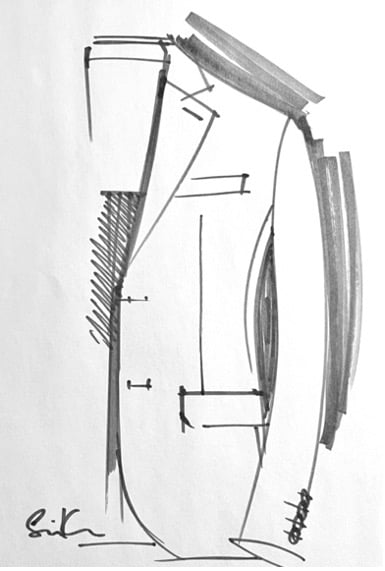|
This week, I heard of the passing of Martin Greenfield, who, out of a workshop in Greenpoint across the east river of New York, worked as a tailor for the last 70 years. I credit Mr. Greenfield for establishing the look of American tailoring, and I was lucky enough to work with him on a special Brooks Brothers project almost 20 years ago. He was an extraordinary personality well known in New York, a Holocaust survivor, a proud father, and an endearing personality that won him both worldly clients and a well-deserved worldwide reputation. He dedicated his life to custom-made suiting and formal wear that served a client list of presidents, billionaires, and the biggest celebrities, but it was his technique and dedication to the method of tailoring that brought him his success. If you are interested in learning more about the legacy of Martin Greenfield, please use this link. https://greenfieldclothiers.com/pages/our-heritage |
|
Tailoring, for me, can certainly be described as a combination of method and art. The method is similar to engineering or architecture and uses a structure that forces you to think in 3-D. When looking at any sportscoat, my eye will travel using the same checklist; I have evolved over years of fittings and styling. My hands will accompany my inspection, going through a routine of the structure and the details, taking in the final balance and harmony the same way I would look at a piece of art. I always start at the shape over the shoulder that descends through the chest and the back panels gently suppressed at the waist. I always notice the ease of a sleeve head that softly connects to the shoulder, knowing that this operation is one of the most delicate and specialized in the tailoring of a jacket. The skill needed to join the sleeve to the armhole is a combination of technique, preparation, componentry, and the expert eye that can make the smallest of adjustments as the machine stitch slowly does its job. The final sleeve itself is subtly shaped around the elbow, finished with an exactly angled hem with precise buttonholes and, of course, the best materials for buttons. I immediately look at the roll of the lapel to the first button, that has to be not too sharp and not too distant from where it should naturally fall. Next, I check the pocket position, whether flap or besom, with perhaps a pick stitch detail on the edge of the flap, lapel, and collar, knowing that this final detail is one of the most delicate as the slow-moving machine imitates a hand stitch. Opening the front, I will look at the pockets, the facing, and, of course, the lining, which are some of the overlooked details that can make all the difference. |
|
This structure over the body will change and adapt based on individual measurements and the fit of the final client, something which, if you think about it, can only really be engineered correctly through the custom-made process. With hundreds of individual operations and parts put together by expert hands, a tailored sportscoat is, for me, the epitome of all clothing and where I feel my designer roots lie when I look back at my career. Thankfully, I have been lucky enough to work with some “Maestros” along the way, learning methods from couture in Paris, Italian Sartoria from Naples to Milan, and my own British heritage of Saville Row and Uniforms. Why would anyone put themselves through the humiliating and demeaning process of trying to find tailoring that fits “off the rack” when, for a small premium, the world of J.Hilburn and custom-made clothing is available to every man in America? |
 |



